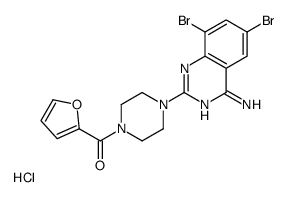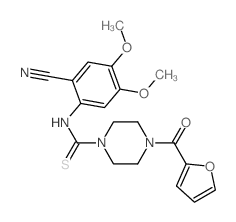40172-95-0
| Name | 1-(2-Furoyl)piperazine |
|---|---|
| Synonyms |
Methanone, 2-furanyl-1-piperazinyl-
Piperazine, 1-(2-furanylcarbonyl)- 1-(2-furoyl)piperazine furan-2-yl(piperazin-1-yl)methanone 2-Furyl(1-piperazinyl)methanone 2-Furyl(piperazin-1-yl)methanone EINECS 254-823-7 MFCD00236012 |
| Density | 1.2±0.1 g/cm3 |
|---|---|
| Boiling Point | 320.3±32.0 °C at 760 mmHg |
| Melting Point | 67-70 °C(lit.) |
| Molecular Formula | C9H12N2O2 |
| Molecular Weight | 180.204 |
| Flash Point | 147.5±25.1 °C |
| Exact Mass | 180.089874 |
| PSA | 45.48000 |
| LogP | -0.17 |
| Vapour Pressure | 0.0±0.7 mmHg at 25°C |
| Index of Refraction | 1.529 |
Synonym:1-(2-Furanylcarbonyl)-piperazin Section 2 - COMPOSITION, INFORMATION ON INGREDIENTS
Risk Phrases: 36/37/38 Section 3 - HAZARDS IDENTIFICATION EMERGENCY OVERVIEW
Irritating to eyes, respiratory system and skin.The toxicological properties of this material have not been fully investigated. Potential Health Effects Eye: Causes eye irritation. The toxicological properties of this material have not been fully investigated. Skin: Causes skin irritation. The toxicological properties of this material have not been fully investigated. Ingestion: The toxicological properties of this substance have not been fully investigated. Causes gastrointestinal tract irritation. Inhalation: Causes respiratory tract irritation. The toxicological properties of this substance have not been fully investigated. Chronic: No information found. Section 4 - FIRST AID MEASURES Eyes: Flush eyes with plenty of water for at least 15 minutes, occasionally lifting the upper and lower eyelids. Get medical aid immediately. Skin: Get medical aid. Flush skin with plenty of water for at least 15 minutes while removing contaminated clothing and shoes. Wash clothing before reuse. Ingestion: Never give anything by mouth to an unconscious person. Get medical aid immediately. Do NOT induce vomiting. If conscious and alert, rinse mouth and drink 2-4 cupfuls of milk or water. Inhalation: Remove from exposure and move to fresh air immediately. If not breathing, give artificial respiration. If breathing is difficult, give oxygen. Get medical aid. Notes to Physician: Section 5 - FIRE FIGHTING MEASURES General Information: As in any fire, wear a self-contained breathing apparatus in pressure-demand, MSHA/NIOSH (approved or equivalent), and full protective gear. During a fire, irritating and highly toxic gases may be generated by thermal decomposition or combustion. Extinguishing Media: Use agent most appropriate to extinguish fire. Use water spray, dry chemical, carbon dioxide, or appropriate foam. Section 6 - ACCIDENTAL RELEASE MEASURES General Information: Use proper personal protective equipment as indicated in Section 8. Spills/Leaks: Clean up spills immediately, observing precautions in the Protective Equipment section. Sweep up, then place into a suitable container for disposal. Avoid generating dusty conditions. Provide ventilation. Section 7 - HANDLING and STORAGE Handling: Wash thoroughly after handling. Remove contaminated clothing and wash before reuse. Use with adequate ventilation. Avoid contact with eyes, skin, and clothing. Keep container tightly closed. Avoid ingestion and inhalation. Storage: Keep container closed when not in use. Store in a tightly closed container. Store in a cool, dry, well-ventilated area away from incompatible substances. Section 8 - EXPOSURE CONTROLS, PERSONAL PROTECTION Engineering Controls: Use adequate general or local exhaust ventilation to keep airborne concentrations below the permissible exposure limits. Use process enclosure, local exhaust ventilation, or other engineering controls to control airborne levels. Exposure Limits CAS# 40172-95-0: Personal Protective Equipment Eyes: Wear appropriate protective eyeglasses or chemical safety goggles as described by OSHA's eye and face protection regulations in 29 CFR 1910.133 or European Standard EN166. Skin: Wear appropriate protective gloves to prevent skin exposure. Clothing: Wear appropriate protective clothing to prevent skin exposure. Respirators: Wear a NIOSH/MSHA or European Standard EN 149 approved full-facepiece airline respirator in the positive pressure mode with emergency escape provisions. Follow the OSHA respirator regulations found in 29 CFR 1910.134 or European Standard EN 149. Use a NIOSH/MSHA or European Standard EN 149 approved respirator if exposure limits are exceeded or if irritation or other symptoms are experienced. Section 9 - PHYSICAL AND CHEMICAL PROPERTIES Physical State: Solid Color: white Odor: None reported. pH: Not available. Vapor Pressure: Not available. Viscosity: Not available. Boiling Point: Not available. Freezing/Melting Point: 68 deg C Autoignition Temperature: Not available. Flash Point: Not available. Explosion Limits, lower: N/A Explosion Limits, upper: N/A Decomposition Temperature: Solubility in water: Specific Gravity/Density: Molecular Formula: C9H12N2O2 Molecular Weight: 180.21 Section 10 - STABILITY AND REACTIVITY Chemical Stability: Stable under normal temperatures and pressures. Conditions to Avoid: Incompatible materials, strong oxidants. Incompatibilities with Other Materials: Oxidizing agents. Hazardous Decomposition Products: Nitrogen oxides, carbon monoxide, irritating and toxic fumes and gases, carbon dioxide, nitrogen. Hazardous Polymerization: Has not been reported. Section 11 - TOXICOLOGICAL INFORMATION RTECS#: CAS# 40172-95-0 unlisted. LD50/LC50: Not available. Carcinogenicity: 1-(2-Furoyl)piperazine - Not listed by ACGIH, IARC, or NTP. Section 12 - ECOLOGICAL INFORMATION Section 13 - DISPOSAL CONSIDERATIONS Dispose of in a manner consistent with federal, state, and local regulations. Section 14 - TRANSPORT INFORMATION IATA Not regulated as a hazardous material. IMO Not regulated as a hazardous material. RID/ADR Not regulated as a hazardous material. Section 15 - REGULATORY INFORMATION European/International Regulations European Labeling in Accordance with EC Directives Hazard Symbols: XI Risk Phrases: R 36/37/38 Irritating to eyes, respiratory system and skin. Safety Phrases: S 24/25 Avoid contact with skin and eyes. S 28A After contact with skin, wash immediately with plenty of water. S 37 Wear suitable gloves. S 45 In case of accident or if you feel unwell, seek medical advice immediately (show the label where possible). WGK (Water Danger/Protection) CAS# 40172-95-0: No information available. Canada None of the chemicals in this product are listed on the DSL/NDSL list. CAS# 40172-95-0 is not listed on Canada's Ingredient Disclosure List. US FEDERAL TSCA CAS# 40172-95-0 is not listed on the TSCA inventory. It is for research and development use only. SECTION 16 - ADDITIONAL INFORMATION N/A |
| Symbol |

GHS07 |
|---|---|
| Signal Word | Warning |
| Hazard Statements | H315-H319-H335 |
| Precautionary Statements | P305 + P351 + P338 |
| Personal Protective Equipment | dust mask type N95 (US);Eyeshields;Gloves |
| Hazard Codes | Xi:Irritant; |
| Risk Phrases | R36/37/38 |
| Safety Phrases | S26-S36-S24/25 |
| RIDADR | NONH for all modes of transport |
| WGK Germany | 3 |
| HS Code | 2934999090 |
|
~59% 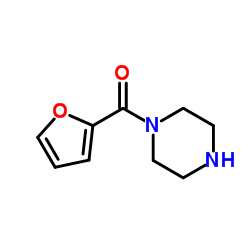
40172-95-0 |
| Literature: Synaptic Pharmaceutical Corporation Patent: US5508306 A1, 1996 ; |
|
~94% 
40172-95-0 |
| Literature: Bandgar; Pandit Tetrahedron Letters, 2003 , vol. 44, # 19 p. 3855 - 3858 |
|
~83% 
40172-95-0 |
| Literature: Development Center for Biotechnology Patent: US6313293 B1, 2001 ; |
|
~62% 
40172-95-0 |
| Literature: Brantford Chemicals Inc. Patent: US5919931 A1, 1999 ; |
|
~80% 
40172-95-0 |
| Literature: Chou, Wen-Chih; Chou, Ming-Chen; Lu, Yann-Yu; Chen, Shyh-Fong Tetrahedron Letters, 1999 , vol. 40, # 17 p. 3419 - 3422 |
|
~86% 
40172-95-0 |
| Literature: Chou, Wen-Chih; Tan, Chang-Wei; Chen, Shyh-Fong; Ku, Hao Journal of Organic Chemistry, 1998 , vol. 63, # 26 p. 10015 - 10017 |
|
~% 
40172-95-0 |
| Literature: Zulli, Allison L.; Aimone, Lisa D.; Mathiasen, Joanne R.; Gruner, John A.; Raddatz, Rita; Bacon, Edward R.; Hudkins, Robert L. Bioorganic and Medicinal Chemistry Letters, 2012 , vol. 22, # 8 p. 2807 - 2810 |
|
~% 
40172-95-0 |
| Literature: Boschi; Di Stilo; Fruttero; Medana; Sorba; Gasco Archiv der Pharmazie, 1994 , vol. 327, # 10 p. 661 - 667 |
|
~% 
40172-95-0 |
| Literature: Novelli; Sparatore Farmaco, 1996 , vol. 51, # 8-9 p. 551 - 558 |
| Precursor 8 | |
|---|---|
| DownStream 5 | |
| HS Code | 2934999090 |
|---|---|
| Summary | 2934999090. other heterocyclic compounds. VAT:17.0%. Tax rebate rate:13.0%. . MFN tariff:6.5%. General tariff:20.0% |



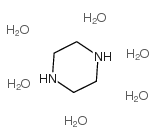

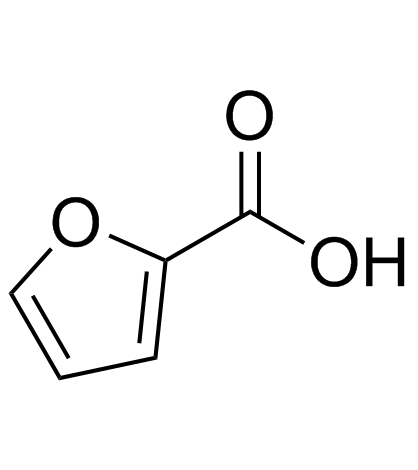

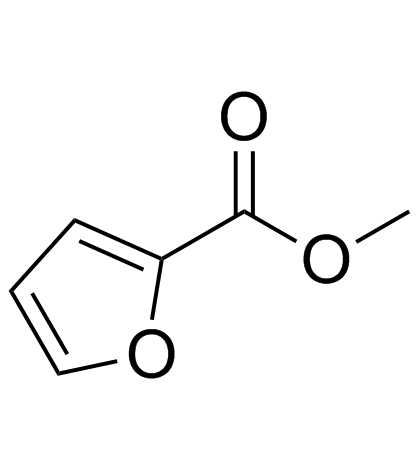

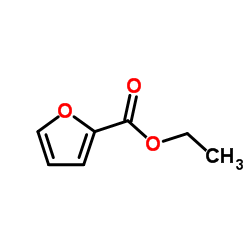
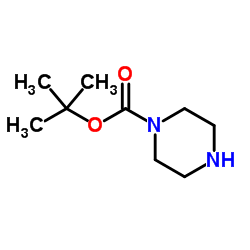
![[4-(4-amino-7-chloroquinazolin-2-yl)piperazin-1-yl]-(furan-2-yl)methanone structure](https://image.chemsrc.com/caspic/386/111218-71-4.png)

